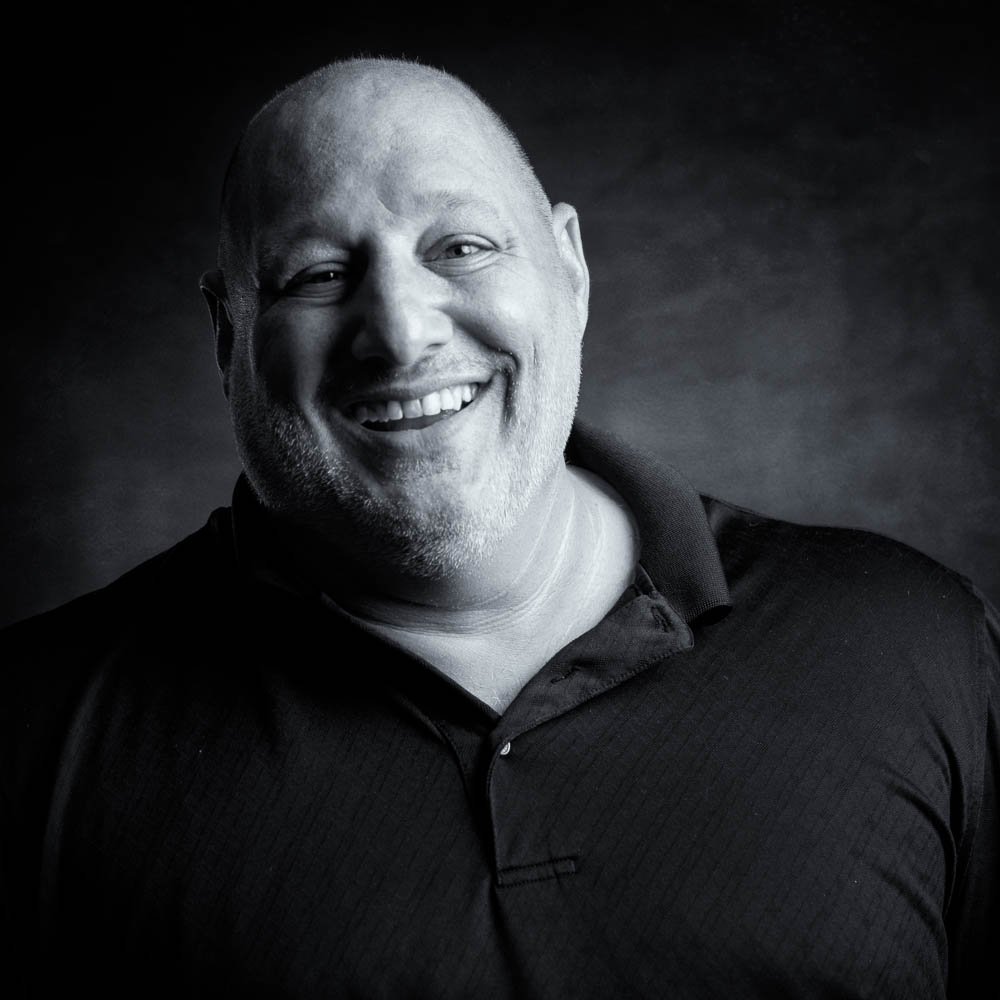Editor’s Note: Don’t miss this week’s free event on when to jump from Lightroom to Photoshop.
I get a phone call from Sandy Parks, an award winning action adventure author. Her current book REPOSSESSED was in the final editing process and she needed a new portrait for the back cover of her book. We collaborated on a few ideas and scheduled a shoot the following day.
Sandy is an attractive woman in her late 50’s. She already looks great. Normally we have a makeup artist on set fixing blemishes and softening wrinkles. For this shoot, we were on a time crunch and we didn’t have access to makeup artist. I compensated by using light modifiers to achieve a soft, pleasing look during a hot Florida afternoon. After the shoot, I started my edits following the Retouching Golden Rule.
Retouching Golden Rule
If the subject’s own mother can’t recognize them, you have gone too far in your retouching. Make the subject look good, but natural.
A Non-Destructive way to Heal Wrinkles and Blemishes
Step 1: Duplicate the Background Image by using the keyboard shortcut [PC] Ctrl + J, [MAC] Command + J . This will preserve the original image in case we need to start over.
Step 2: Create a blank layer by clicking on the create new layer icon on the bottom of the Layers palette. Name the layer Healing Brush. Having the Healing Brush edits on a separate layer gives us more control of the edit.
Step 3: Select the Spot Healing Brush from the tools palette. With the Healing Brush selected, click Content-Aware next to Type and place a check next to Sample All Layers. Draw short strokes in the direction of wrinkles. For blemishes, a single click should be fine. The Spot Healing Brush does a good job at analyzing pixels around a selected area and looks for the best match. For best results, take your time and change brush sizes —using the left and right bracket keys— to fix wrinkles. When finished, experiment with the opacity slider to dial in or dial back the effect. You can eve apply a layer mask for a more precise control.
Step 4: Create a blank layer and name it Patch. Like the Healing brush, edits we make using the Patch tool will be on it’s own layer. For this to work, we need to adjust a few settings in the next step.
Step 5: Select the Patch tool from the tools palette. With the Patch tool, choose Content-Aware next to Patch, enter a value of 5 for structure, 3 for color and place a check next to Sample All Layers. Draw a selection around the infected area and drag it to section that has the texture you are looking for The only way to master this tool is to use it and experiment with the three settings.
Understanding Content-Aware options
Structure: Enter a value between 1 and 7 to specify how closely the patch should reflect existing image patterns. If you enter 7, the patch adheres very strongly to existing image patterns. If you enter 1, the patch adheres very loosely to the existing image patterns.
Color: Enter a value between 0 and 10 to specify the extent to which you want Photoshop to apply algorithmic color-blending to the patch. If you enter 0, color blending is disabled. A Color value of 10 applies maximum color blending.
Sample All Layers: Enable this option to create the result of the move in another layer using information from all layers. Select the target layer in the Layers panel.
Bonus Step
Finish the portrait with your favorite skin retouching tool. I’ve been using Perfectly Clear. The program is intelligent enough to know if the image doesn’t need a certain effect, it won’t add it.
The portrait should realistically resemble the subject. An over retouched image making the subject appear 20 years younger could cause confusion. Imagine Sandy’s embarrassment if a fan asked her where is your daughter. If you question if an image is over processed, remember the Retouching Golden Rule and retouch approactly.

Vanelli is a photographer, educator and author based in Florida. Currently he shoots for Inside Lacrosse Magazine, teaches workshops, and writes for Photofocus. Click here for a list of Vanelli’s articles.
https://www.facebook.com/mrvanelli
https://twitter.com/vanelli
This Post Sponsored by:
Perfectly Clear is all about saving you time so you can focus on doing what you love best. Get a free trial of the award winning plug-in at http://bit.ly/perfectlyclear1
The HDR Learning Center. Check out new ways to use High Dynamic Range photography to make compelling images. Free tutorials and posts to get results. Produced in partnership with HDRsoft
Arizona Highways Photo Workshops. For more than 30 years, Arizona Highway Photo Workshops has been committed to helping photographers find inspiring destinations, quality education and spectacular images. Get more information (and enter our contest) at http://www.ahpw.org/FindIt/
Platypod Pro™– the world’s most compact camera support. Use it with your ballhead in place of a tripod. Click here for more info — http://bit.ly/platypodpro
Creative Cloud Photography plan. Take your best shot and make it even better with the Creative Cloud Photography plan. Get all the essential tools, including Adobe Photoshop Lightroom and Photoshop, to craft incredible images every day, everywhere — whether you’re a beginner or a pro. It’s all your photography. All in one place.
lynda.com Learn photography anytime, anywhere, and at your own pace—from bite-sized tutorials to comprehensive courses. Try lynda.com free for 10 days by visiting lynda.com/Photofocus
Filed under: Adobe, Photography, Portrait, Software, Technique & Tutorials Tagged: Adobe Photoshop, Context Aware options, Fixing Blemishes, Fixing Wrinkles, healing Brush, Patch tool, Photoshop, Robert Vanelli, Vanelli
![]()











